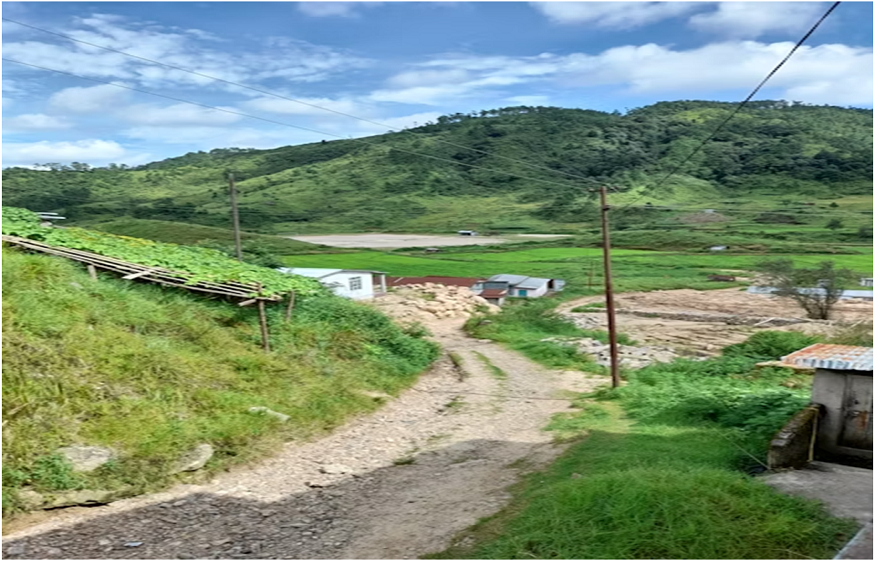Nepal is full of beauty, high mountains, deep valleys, and remote trails that take people into another world. Trekking in Nepal is not just walking—it’s a journey to nature, peace, and strong mountain culture. This article shows you some of the best natural treks in Nepal, like Nar Phu Valley, the Annapurna Circuit with Tilicho Lake, the 10-day Manaslu Circuit, and Makalu Base Camp. These treks take you close to nature’s best gifts: snow peaks, hidden valleys, deep forests, and pure Himalayan rivers. From the silence of remote places to high pass views, these treks are full of wonder and memories.
Nar Phu Valley Trek
The Nar Phu Valley Trek is one of the less visited but very natural treks in Nepal. It is a hidden area near the Annapurna side and full of stone houses, old Buddhist culture, and a dry mountain valley. You go through small villages, big canyons, and prayer flags and cross Kang La Pass. The trek is not too crowded and feels like walking in old Himalayan times.
You see yak pasture, blue sheep, rocky land, and deep gorges. Old monasteries like Tashi Lhakhang and villages like Nar and Phu make this trek more peaceful and full of nature. It’s good for people who love remote and different paths.
Annapurna Circuit Trek with Tilicho Lake
The Annapurna Circuit Trek with Tilicho Lake is a dream trek for many people. The route goes around the Annapurna mountains, with changing views and cultures. You pass through green fields, forests, and river bridges and climb slowly to Tilicho Lake, one of the world’s highest lakes at 4919 meters.
After Tilicho, the trek joins again to the main trail and crosses Thorong La Pass, a very high point (5416 m) with snow and big Himalaya views. It gives a full taste of nature—high lake, deep river valley, snow peak, and dry land like Mustang. Villages like Manang, Pisang, and Muktinath show a mix of Buddhist and Hindu culture too.
Manaslu Circuit Trek – 10 Days
The Manaslu Circuit Trek 10 days is good for people with a short time but who want a big mountain experience. It circles Mount Manaslu (8163 m), Nepal’s 8th highest peak. The trail follows the Budhi Gandaki River and passes through small villages, pine forests, and suspension bridges.
You cross Larke Pass (5106 m), a cold and snowy pass with an amazing view of Manaslu and Himlung. Villages like Sama Gaun and Lho have old monasteries, and you see local life with mountain culture. It’s remote and wild, but now more lodges are there, so the trek is comfortable. Less crowded than Annapurna or Everest, but with the same natural beauty.
Makalu Base Camp Trek
The Makalu Base Camp Trek is more remote and harder than other treks but full of raw nature. It takes you to the foot of Mount Makalu (8485 m), the 5th tallest mountain. The trail goes from low land to high glacier area, with tropical forest, waterfalls, and rare animals like red pandas.
You cross Barun Valley, one of the most untouched nature zones in Nepal. It’s quiet, wild, and beautiful. At base camp (around 5000 m), you get a close view of Makalu, Chamlang, and Everest too. The trek needs camping in the upper part, but views and peaceful feel make it all worth it.
Natural Wonders for These Treks
All these treks show different parts of Nepal’s amazing nature. Nar Phu Valley gives you dry desert land with old Buddhist culture and a high Kang La Pass view. The Annapurna Circuit shows rivers, forests, Tilicho Lake, and wide-open Mustang land.
The Manaslu Trek is full of wild rivers, the big mountain wall of Manaslu, and a long forest walk. Makalu Base Camp gives raw jungle, rocky hills, and snowfields close to the Everest area. Each trek has natural wonders—waterfalls, glaciers, yaks, forests, rhododendrons, and silent places where no car or machine goes.
These places are also home to many wild animals and birds. You can see blue sheep, lammergeiers, and maybe even snow leopards if you’re lucky. Big rivers like Budhi Gandaki, Marsyangdi, and Barun are always with you on the trail. Mountains like Annapurna, Manaslu, Makalu, Pisang Peak, and Tilicho Peak always shine above you.
Best Seasons
The best times for these treks are spring and autumn.
- Spring (March to May): Flowers bloom, the weather is warmer, and the sky is clear. Rhododendrons in the lower forest look very colorful. Snow starts to melt, so high passes are easier.
- Autumn (September to November): Clear sky, fresh air, after monsoon rain. Best mountain view time. Less chance of rain or snow.
Winter (Dec–Feb) is very cold and not good for high passes. Summer (June–August) has monsoon and rain; trails become slippery and clouds hide the mountains. But if you like green and no people, the monsoon gives wild nature and waterfalls too.
Food and Accommodation
Most of these treks now have tea houses or lodges.
- In Nar Phu, lodges are basic but have food like dal bhat, noodles, soup, and tea.
- The Annapurna Circuit is more developed—hot showers, bakeries, and even Wi-Fi in some places.
- The Manaslu Trek now also has good teahouses in most villages. Dal bhat, momo, chowmein, and fried rice are common foods.
- Makalu Base Camp needs camping after Khongma, so food is carried by a guide or porter.
Food on the trek is simple but fresh. Dal bhat (rice, lentil, and curry) gives good energy. Hot tea and garlic soup help with colds and altitude. Local people grow vegetables and keep yaks and goats, so sometimes milk or meat is also available.
Weather and Temperatures
The weather on the mountain changes fast.
- In spring and autumn, daytime is sunny, 10 to 20°C in the lower part, and cold at night.
- Higher places like base camp or passes go to -10°C at night.
- In winter, some places go below -20°C at night.
Snow can come anytime above 4000 m; wind is strong in passes. Rain can make trails muddy in monsoon. But the blue sky after rain is very beautiful. Always carry warm clothes, a rain jacket, and good shoes. Weather is a wild mind in trek—respect it.
Tips for a Successful Tour
- Train Before Trek—Walk, hike, or climb stairs before a trip. The body should be ready for a 5–7 hour daily walk.
- Go Slow—In high places, slow walking helps with breathing. Don’t rush.
- Drink Water—Keep drinking. The mountain air is dry. Use a water purifier or buy a bottle with no spring.
- Pack Light—Only carry what you need. Good shoes, a down jacket, a sleeping bag, sunblock, a hat, and gloves.
- Respect Culture—In Nar Phu or Manaslu, people follow the old way. Say “Namaste,” no touching without asking, and no loud music.
- Take a guide or porter—they help with the route, carry the load, and talk to locals. Also help in an emergency.
- Listen to Body— Headache, tired, no sleep—maybe a sign of altitude. Rest, and descend if needed. Don’t force it.
- Permit Ready—These treks need special permits. TIMS, ACAP, MCAP, or restricted area permit.
Conclusion
Nepal is true mountain land. These treks—Nar Phu, Annapurna Circuit with Tilicho Lake, Manaslu Circuit, and Makalu Base Camp—give you full natural wonder. From desert valleys to green forests, icy passes to blue lakes, it’s all in one country.
Trekking here is not just walking trails; it is walking in the heart of Earth’s nature. You meet mountain people, see wild animals, cross wooden bridges, walk with yaks, and sleep in small houses under stars. If you want peace, adventure, and nature’s pure beauty, these treks are waiting.
Come slow, walk soft, breathe deep—Nepal’s natural wonders are calling.

